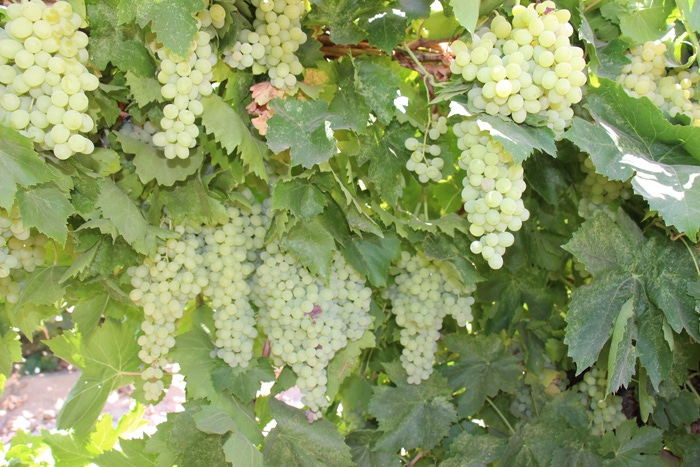June 22, 2016

While there can be several insect and disease threats to a raisin crop, George Zhuang, University of California Cooperative Extension farm advisor for Fresno County, recommends that growers be alert for two in particular this summer.
He ranks the vine mealybug as the top insect threat in most raisin vineyards, especially where it appeared last year. Feeding activity can reduce vine vigor and lead to the collapse of clusters or whole spurs.
In addition, the pest excretes large amounts of a sticky substance, honeydew, which causes sooty mold and bunch rot. What’s more, it’s a vector of the leafroll virus, which can lower yields 10 percent to 20 percent and delay sugar and anthocyanin accumulation in berries, resulting in fruit that is poorly colored and late in ripening.
The best defense against vine mealybug damage, Zhuang says, is proper sanitation of equipment, people, clothing — anything that has contacted infested plant parts — when moving from one vineyard to another. Otherwise, getting the upper hand on this pest can cost considerable time and expense.
“The vine mealybug is a nasty insect,” he says. “Controlling it is a slow process that requires a multi-year program of monitoring and treating infested areas. Over the past several years, we’ve seen large outbreaks of vine mealybug. However, through education and increased understanding of the nature of the insect, growers are now doing a better job of limiting its spread and controlling it where it does appear.”
Recommendations for using insecticides to control vine mealybug are based on its behavior. It overwinters in the soil, on the roots or under the bark of the lower trunk, Zhuang says. As temperatures begin warming in the spring, it starts moving up the trunk to the cordon and, as the season progresses, to the shoots, foliage, and eventually, the clusters.
One approach he suggests for treating a conventional vineyard, would be to spray vine trunks with Lorsban prior to bud break. This spray not only attacks the overwintering population, it also controls ants. Then, after bud break, he recommends treating vines with Applaud, Admire, or Movento to target vine mealybugs at different vine growth stages during the spring. A post-harvest application of Movento would provide extra protection, Zhuang says. More information on controlling VMB is available online at www.ipm.ucdavis.edu.
Organic growers have far fewer options, he notes. “Controlling vine mealybug can be exasperating, because there are no really effective organic spray materials. Using mating disruption is an alternative, but it’s expensive.”
He also advises raisin growers to be prepared for higher powdery mildew pressure in vineyards this season. “I’m hearing more growers talk about the disease this spring,” Zhuang says. “Due to higher humidity levels in the canopies from the increased precipitation this year, there’s the potential for an increase in powdery mildew outbreaks.
Because of its high vigor and tendency to produce dense canopies, the Fiesta raisin grape variety is more susceptible to powdery mildew than others, he notes.
In scouting their vineyards this season, Zhuang advises growers also to be alert for signs of trunk diseases, such as dead spurs, stunted shoots, and cankers. “We saw a lot of trunk disease last year and are seeing it this year,” he says. “In fact, I know several Fresno County growers who lost vines to Esca, as well as Eutypa dieback. Stress from the drought might leave the vines more susceptible to the pathogens.” More information about trunk diseases is available online at www.ipm.ucdavis.edu.
You May Also Like




